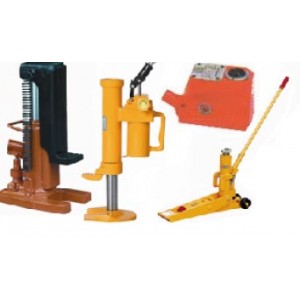
If you need to lift heavy loads and
equipment from underneath, you generally have a choice between using a
hydraulic lift or a jack. But what exactly is the difference between these two
important lifting devices? Hydraulic lifts are stationary and typically use a
scissor action to raise a large platform. Jacks are portable units with a much
smaller lifting platform yet perhaps more versatile.
Here in the UK, both hydraulic jacks and lifts are commonly used in vehicle repair centres, factories, warehouses, and construction sites. Knowing when to use a jack versus a hydraulic lift can make your lifting jobs more efficient and safer.
Hydraulic lifts are stationary lifting platforms that use hydraulic cylinders and pumps to raise loads up to the desired working height. Some key uses for hydraulic lifts include:
One of the most common uses for hydraulic lifts is raising cars, lorries, and other vehicles for repair or maintenance work underneath. Hydraulic vehicle lifts can lift the entire weight of a vehicle efficiently and safely.
Lifting Heavy Industrial Equipment
Hydraulic lifts enable safe lifting of very heavy machinery in factories and industrial facilities. Everything from diesel generators to CNC machines can be lifted and held securely at height.
Lifting Materials to Different Levels
Hydraulic lifts mounted on loading docks or in warehouses allow materials, pallets, and boxes to be easily raised or lowered between ground level and lorry trailer height.
Adjustable Working Heights
Hydraulic lifts allow workers to adjust the platform height to suit the required task. The platform can be lowered for easier loading and then raised to a comfortable working height.
Jack Uses
Jacks are portable lifting devices powered by mechanical, hydraulic, pneumatic, or electrical systems. Their key uses include:
Lifting One Corner of a Vehicle
When raising just one corner or side of a vehicle for a tyre change or brake repair, a small trolley jack is ideal. Jacks take up minimal space compared to hydraulic lifts.
Portable Lifting Needs
Jacks are designed to be moved around and used in different locations as needed. Their portability makes them suited to temporary lifting jobs.
Getting Vehicles Unstuck
Jacks like bottle jacks and hi-lift jacks can quickly lift stuck vehicles out of mud or snow. Their ability to lift equipment in remote locations makes jacks a recovery tool.
Fitting Parts Underneath
Mechanics often use jacks to lift one part of a vehicle just high enough to allow working space to install axles, transmissions, oil pans, or exhaust systems.
Now that we've reviewed the main uses,
let's summarise the key differences between hydraulic lifts and jacks:
●
Stationary vs. Portable - Hydraulic
lifts are fixed installations. Jacks are mobile units.
●
Lift Entire Vehicle vs. One End -
Hydraulic lifts raise the entire vehicle. Jacks lift single sides or ends.
●
Higher Weight Capacities - Hydraulic
lifts can handle anything from small cars to heavy lorries and machinery. The
load capacity of jacks is more limited.
●
Built-in Safety Features - Hydraulic
lifts have guards, locks, overload stops, and other safety mechanisms. Jacks
rely more on the operator for safe operation.
●
Faster Positioning - With hydraulic
lifts, the work comes to you at an ergonomic height. Jacks require manually
rolling them into place and stacking items on top.
For your commercial or industrial lifting
needs, consider both hydraulic lifts and jacks – as both have their benefits. However,
the option of choice depends on the application, load size, workspace, and
mobility needs. Our experts at Lifting Gear Direct are happy to advise you on
selecting the best lifting gear to safely handle any job.